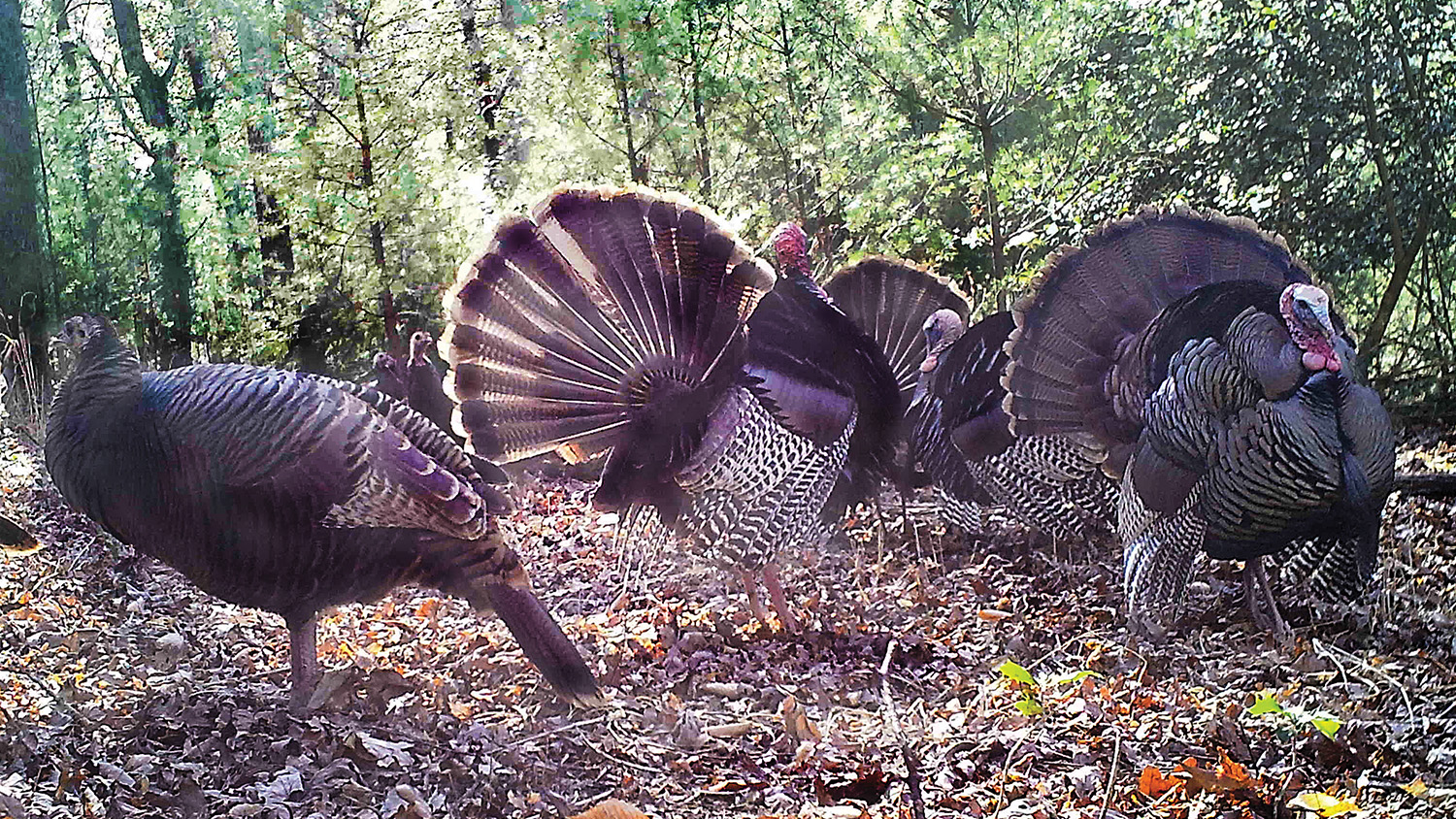Tracking Turkeys
Researchers use camera traps to document the breeding seasons of wild turkeys in North Carolina.

Researchers have used images provided by hundreds of camera traps set up by citizen-scientists across the state to get a better handle on when wild turkeys are breeding in North Carolina. And that, they hope, could be helpful for the officials who set the dates each year for turkey hunting season.
Chase Carey, a senior from Concord, N.C., teamed up with Roland Kays, a research associate professor in the College of Natural Resources who has worked extensively with camera traps to document wildlife behavior. Carey’s task was to sort through thousands of images of wild turkeys captured by 527 different cameras over several years — a job that took him about seven months to complete.
“What this data allows them to do, hopefully, is to see how the population is doing.”
— Chase Carey
“It was tiring at some points, but I learned a lot about turkeys,” says Carey, a fisheries, wildlife and conservation biology major. “I’m a lot more interested in them now than I was before.”
Carey was looking for images that showed breeding behavior, such as toms fanning out their tail feathers (known as strutting) and brood rearing. What he found was that there was some variation in the timing of breeding from year to year — information that could be useful in setting the dates for hunting season.
Opening the hunting season before the turkeys breed, for example, could lead to declines in the population.
“The goal is to have a sustainable population, but that may look different from year-to-year,” Carey says. “What this data allows them to do, hopefully, is to see how the population is doing.”


